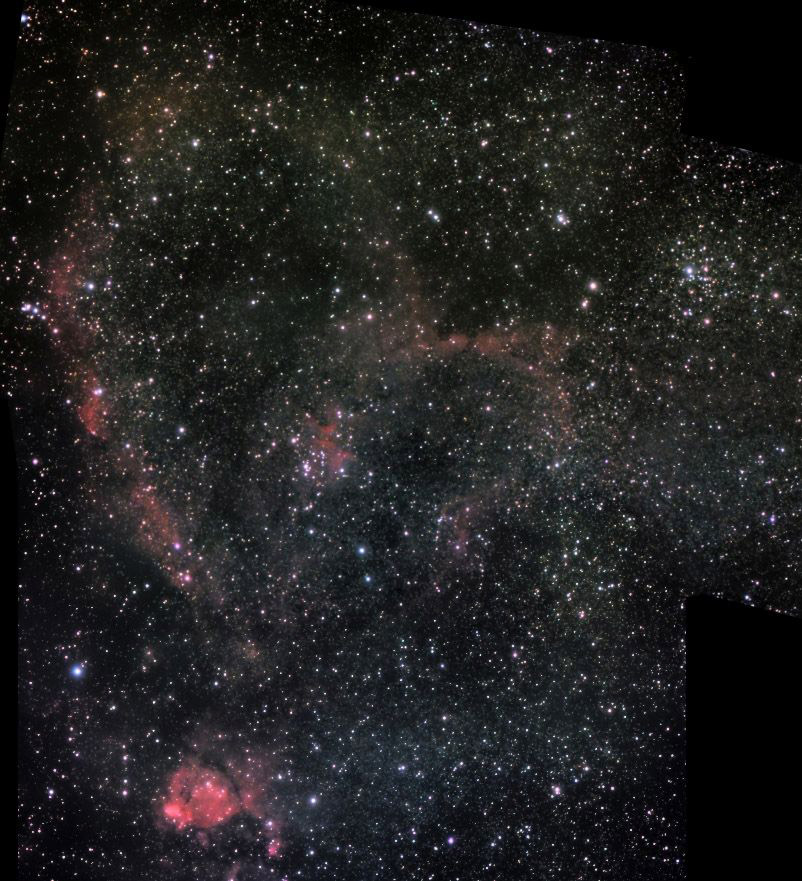Although I made this picture back in December, I thought it would be appropriate to wait and post it on Valentine’s Day.
The Heart Nebula (15 min exposure Dec 14, 2020)

The Heart Nebula, IC 1805 or Sharpless 2-190, lies about 7500 light years away from Earth. It is an emission nebula showing glowing ionized hydrogen gas and darker dust lanes.
The Heart Nebula’s intense red output is driven by the radiation emanating from a small group of stars near the nebula’s center. This open cluster of stars, known as Collinder 26 or Melotte 15, contains a few bright stars nearly 50 times the mass of our Sun, and many more dim stars that are only a fraction of our Sun’s mass.
The brightest part of the nebula (a knot at its western edge) is separately classified as NGC 896, because it was the first part of the nebula to be discovered. A separate portion of NGC 896 is cataloged as IC 1795. The other parts of the Heart Nebula are very faint and visible only in hotographs.
Nearby open star cluster NGC 1027 contains about 50 stars, many in four prominent mutually intersecting star chains. It is not physically associated with the Heart Nebula – it lies in the foreground, about 3,000 light years away from us.
Since the Heart Nebula is a large object, larger than the field of view of my telescope/camera combination, I had to take four separate images offset from each other and then combine them together into a mosaic. This is the reason for the irregular edges.
Today’s post is the beginning of a second year for this blog. My first post was on February 3 of last year.